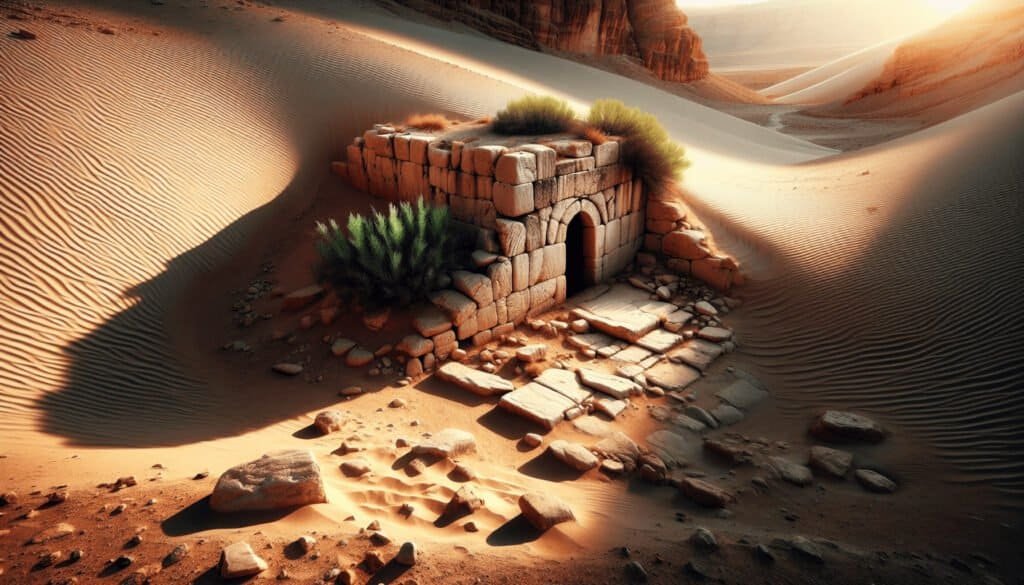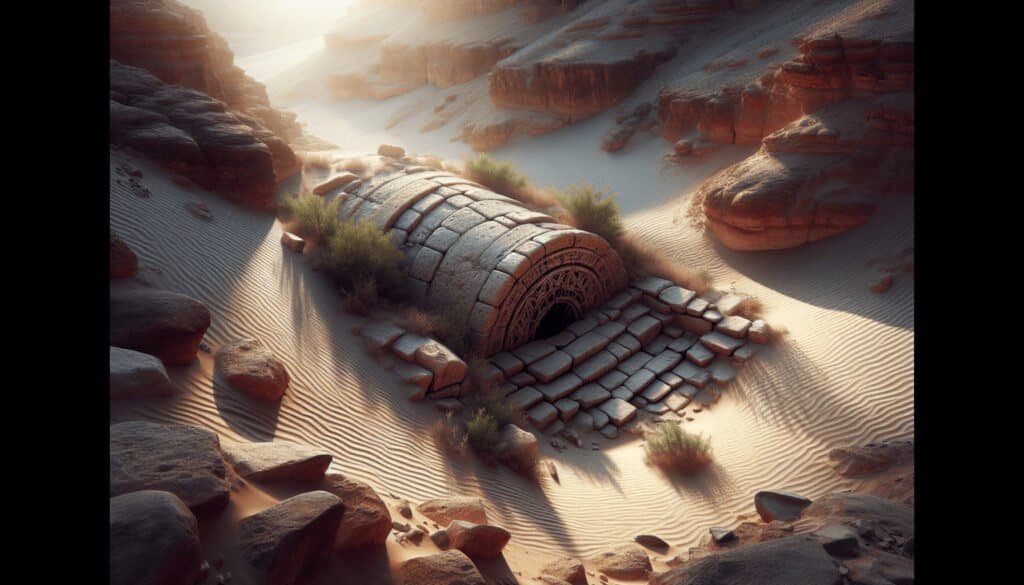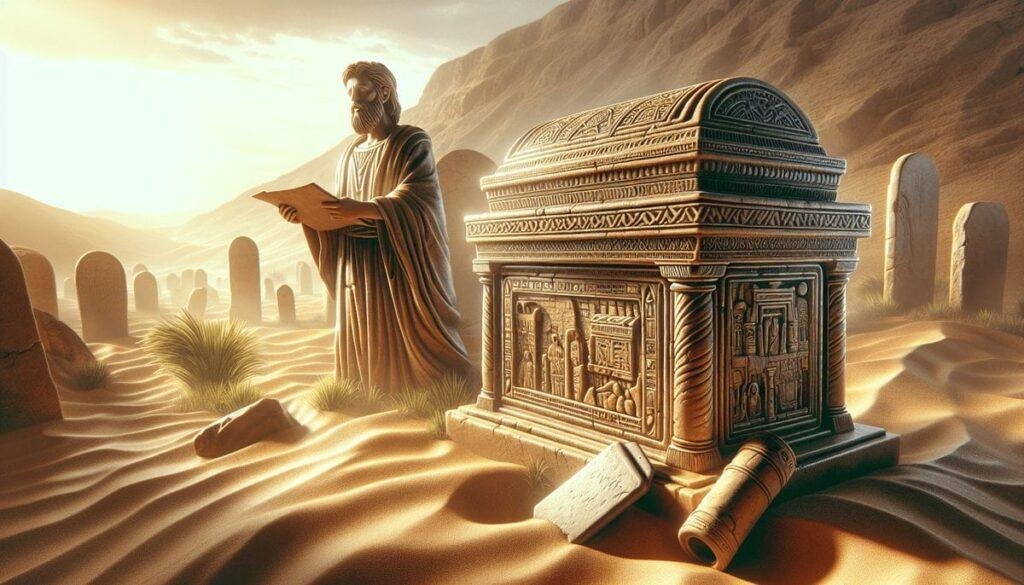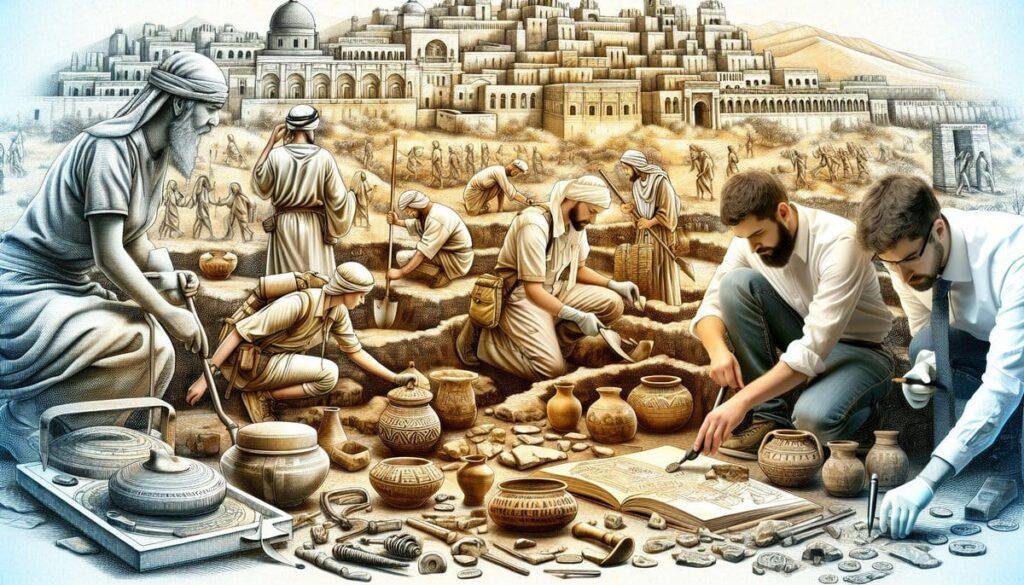What stories do the ancient remnants of Jericho whisper to us today? It’s fascinating to think about how a city, famous for its walls, offers profound insights into the human experience, especially in its architectural marvels like the Underground Ramp.
The Enigma of Jericho
Jericho is not merely a location; it’s a cipher, encrypted with layers of history and culture that intrigue historians and archaeologists alike. This ancient city, often referred to as the “City of Palms,” is reputed to be one of the oldest inhabited cities in the world. Situated near the Jordan River, Jericho has seen the rise and fall of many civilizations, and it’s particularly renowned for its biblical significance.
More than just a city, Jericho serves as a testament to the resilience and ingenuity of humanity, particularly in the arid desert. Its strategic location made it a hub for trade and interaction between different cultures. The mind boggles at the thought of the myriad of lives that have unfolded along these now-historic streets.
The Underground Ramp: A Marvel of Engineering
Imagine standing atop a structure that has transcended millennia. The Jericho Underground Ramp, an engineering innovation, is a fascinating archaeological find, showcasing the ingenuity that ancient peoples employed to adapt to their harsh environment.
The Structure and Its Purpose
The ramp, believed to date back to the time when the city was being fortified, reflects a practical understanding of engineering. While much of the design remains shrouded in mystery, it’s speculated that it served to transport goods or provided access to various sanctuaries in and around Jericho.
The very essence of the ramp suggests something much deeper—a communal effort to create a space that would not only serve practical needs but also offer a refuge amidst uncertainties. This speaks to fundamental human instincts: the need for security, sustenance, and shelter.
Architectural Significance
Jericho’s architecture generates immense interest among scholars, particularly the ramp’s construction techniques. It incorporates mud bricks and stonework indicative of advanced construction practices for that era.
Here’s an eye-catching table that breaks down some architectural aspects:
| Aspect | Description |
|---|---|
| Materials Used | Primarily mud bricks and stones |
| Construction Era | Believed to have been built during the Late Bronze Age |
| Design | A sloping ramp with wide, stable bases |
| Function | Possibly for transporting goods or religious access |
This simplistic yet profound architectural brilliance still echoes through time, reminding us how the people of Jericho adapted and flourished under challenging conditions.

Covenant Bonds: The Ties that Bind
With its historical and architectural significance, it’s vital to consider the social and cultural context of the Jericho Underground Ramp. You might wonder how this ties into the theme of covenant bonds.
A Reflection of Community
Covenants throughout history symbolize agreements or relationships, often sanctified through rituals. Jericho, with its various cultural influences, embodies this idea deeply. The ramp can be seen as a manifestation of collective commitment. It reinforces the importance of community and the pledge to support one another in times of need.
Generations before us understood the value of bonds, be it in trade, faith, or friendship. The ramp isn’t just a structure; it’s a metaphor for how societies coalesce around shared goals, even in the desert’s harsh realities. The Jewish people’s covenant with God, as depicted in numerous biblical texts, echoes the importance of such ties.
Theological Significance
From a theological standpoint, covenants are monumental. They’re foundational to many faith traditions. The journey of the Israelites into the Promised Land, marked by their commitment to God, is intricately tied to Jericho’s legacy.
You can draw parallels between the architectural prowess of the ramp and the divine promise. Just as the ramp provided a pathway to different realms within the sanctuary, the covenant offered a route to understanding one’s relationship with the divine.
Archaeological Insights
Archaeological research continues to reveal the secrets behind Jericho and its underground ramp—each discovery adds another piece to the expansive puzzle of ancient life.
Excavation History
Notably, excavations have taken place since the late 19th century, notably by figures like Kathleen Kenyon in the 1950s. Her work unearthed significant findings, leading to the understanding of Jericho’s urban layout and its ramp.
Histories of excavations tell us about the perseverance of those who placed their physical and scholarly efforts into unearthing the past. Each artifact found, whether a simple pottery shard or a structural remnant, enriches our understanding of humanity’s journey.
Findings of Significance
Among the artifacts recovered, many shed light on the lives of Jericho’s ancient inhabitants. From pottery to weapons, each piece contributes to a narrative of survival, trade, faith, and community.
| Artifact | Significance |
|---|---|
| Pottery Shards | Indicate daily life and trade interactions |
| Tools and Weapons | Reveal aspects of defense and societal structure |
| Religious Items | Illustrate the spiritual dimensions of the society |
These findings usher in understanding, portraying a community that thrived against various odds.

The Legacy of Jericho
Jericho is more than an archaeological site; it represents the embodiment of human resilience, governance, and spirituality across ages. The Underground Ramp stands as a poignant symbol of this legacy.
Modern Reflections
In contemporary times, Jericho provokes us to reflect on what we value in our communities. The significance of covenant bonds rings true today as we navigate an increasingly complex world—relationships with our neighbors, nurturing connections, and commitment to shared values are as important now as they were thousands of years ago.
As we acknowledge the remnants of the past, just imagine what the walls and the ramp might convey if they could talk. They’d likely remind us that despite challenges and changes, the bonds we forge are paramount for success and survival.
Cultural Relevance
Jericho serves as a cultural touchstone, demonstrating how architectural marvels can encapsulate social values and historical narratives. Such structures remind us of our journey—how far we’ve come and the lessons learned along the way.
The ramp of Jericho holds significance beyond its architectural design; it resonates with humanity’s quest for security, understanding, and sanctity. In the bustle of modern life, acknowledging this connection can prompt a vital contemplation of what it truly means to live in community and faith.
Conclusion: Bridging Ancient and Modern Perspectives
Reflecting on Jericho’s Underground Ramp and its covenant bonds presents a rich tapestry that links ancient traditions with modern experiences. The essence of what it means to form bonds in desert shelters resonates through time, underscoring the pivotal role of cooperation and faith in shaping societies.
The stories unearthed from the soil of Jericho challenge you to consider your connections today. Are you fostering the bonds that matter in your life? As you ponder the past, remember that the present and future are also imbued with the potential for covenant ties—community forms supporting one another, just as they have for thousands of years.
As the sands of time shift, the remnants of Jericho remain steadfast, reminding us of the enduring nature of human bonds. They guide us toward understanding our journey, reinforcing that even in solitude, we are never truly alone. Wouldn’t it be fitting to carry those lessons forward, bridging the ancient with the contemporary?


